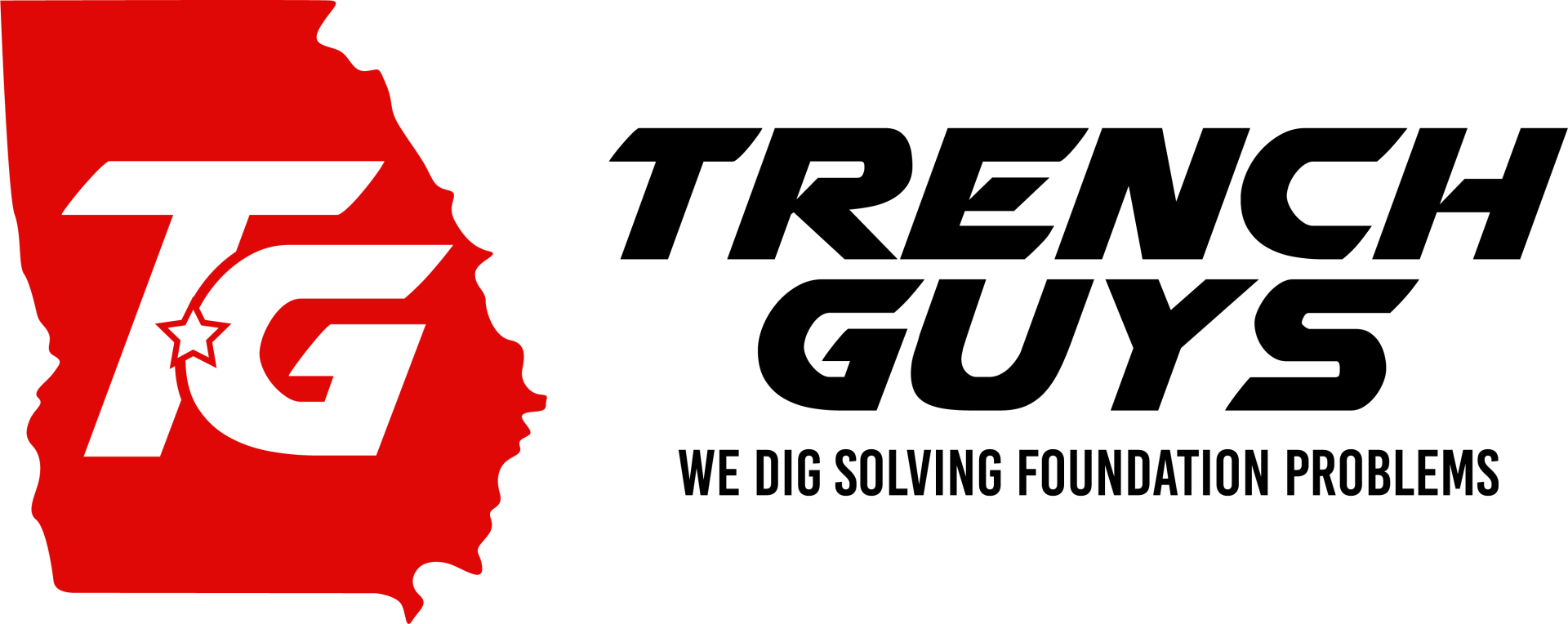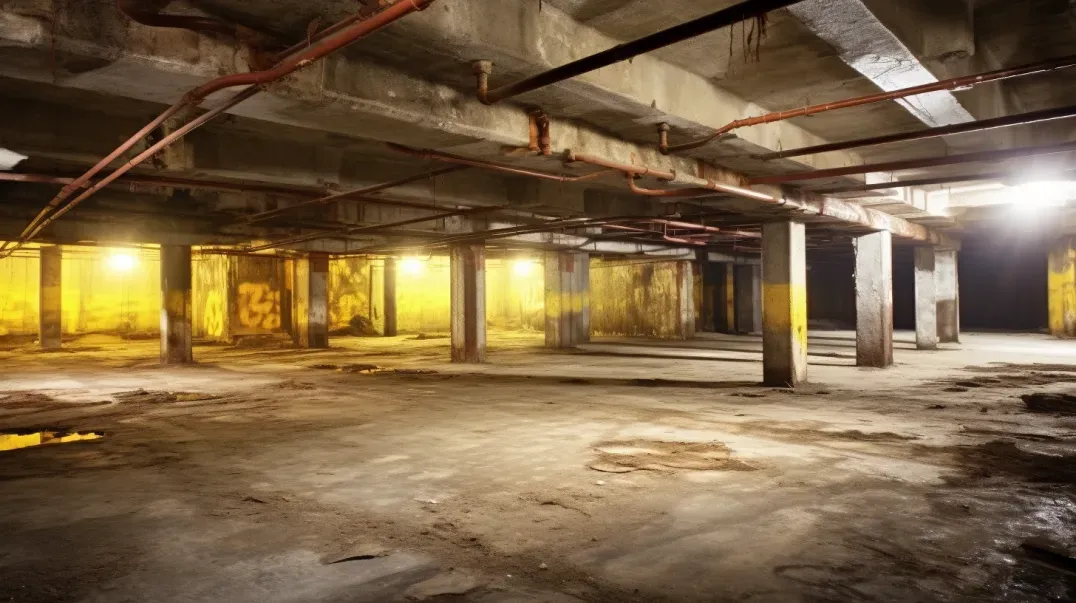In the hidden recesses beneath our homes, a silent battle is waged against an unseen foe: mold. This battle's front lines are often found in one of the most overlooked areas of residential construction—the crawl space. The key to victory in this ongoing struggle lies in understanding and optimizing the relationship between crawl space ventilation and mold prevention. This blog delves into the critical dynamics of this relationship, shedding light on how proper ventilation can be a homeowner's strongest ally in maintaining a healthy, mold-free home.
Mold thrives in damp, stagnant environments, making poorly ventilated crawl spaces its ideal breeding ground. Left unchecked, mold can not only cause significant damage to the structural components of a home but also pose serious health risks to its inhabitants. The stakes are high, and the need for effective crawl space ventilation cannot be overstated.
Through this exploration, we aim to equip homeowners with the knowledge and tools necessary to prevent mold growth by ensuring their crawl spaces are properly ventilated. From the science of mold proliferation to practical tips for enhancing airflow and reducing moisture, this blog will guide you through everything you need to know to protect your home and your health from the dangers of mold.
Join us as we navigate the complexities of crawl space ventilation and mold prevention, offering expert insights and actionable advice. Whether you're battling an existing mold problem or looking to safeguard your home against future issues, understanding the critical role of crawl space ventilation is the first step towards a healthier, more resilient living environment.
Understanding Mold in Crawl Spaces
Crawl spaces, often out of sight and out of mind, can unfortunately become the perfect breeding ground for mold. Understanding the conditions that promote mold growth and the risks it poses is essential for maintaining a healthy living environment and preserving the integrity and value of your home.
Conditions that Promote Mold Growth
The Role of Moisture, Temperature, and Organic Material:
- Moisture: Mold requires moisture to grow. Crawl spaces can become damp due to groundwater seepage, poor drainage, or condensation from temperature differences between the crawl space and outdoor air. This moisture creates an ideal environment for mold.
- Temperature: Mold thrives in temperatures that are typically comfortable for humans, between 60°F and 80°F. Unfortunately, these temperatures are common in crawl spaces, especially if they are not properly insulated or ventilated.
- Organic Material: Mold feeds on organic materials, such as wood, paper, and fabric, which are often present in crawl spaces. These materials, when damp, provide the perfect food source for mold to grow and spread.
Understanding these conditions is the first step in preventing mold growth. By controlling moisture, regulating temperature, and minimizing the presence of organic materials, homeowners can significantly reduce the risk of mold in their crawl spaces.
Health and Structural Risks of Mold
Health Implications for Residents:
Mold in crawl spaces can negatively impact indoor air quality, leading to a range of health problems for residents. Exposure to mold spores can cause allergic reactions, asthma attacks, and other respiratory issues. For individuals with compromised immune systems, the health risks can be even more severe.
Potential Damage to Home Structure and Value:
Beyond health risks, mold can also cause significant damage to the structure of a home. It can weaken floors and walls by breaking down the wood and other materials it grows on. Over time, this can lead to costly repairs and decrease the overall value of the property. Furthermore, the presence of mold can make a home less attractive to potential buyers, affecting its marketability.
The Role of Ventilation in Controlling Moisture
Effective moisture control is paramount in preventing mold growth and ensuring the structural integrity and air quality of your home. Ventilation plays a crucial role in this process, offering a means to manage humidity levels within crawl spaces. Understanding the science behind airflow and moisture control, as well as the differences between natural and mechanical ventilation systems, can empower homeowners to make informed decisions for their homes.
How Ventilation Affects Humidity Levels
The Science Behind Airflow and Moisture Control:
Ventilation works on the principle of replacing moist air with dry air, thus reducing the overall humidity levels within a space. In crawl spaces, where moisture can accumulate due to ground evaporation, leaks, or condensation, proper ventilation ensures continuous airflow, preventing the stagnation of humid air.
- Airflow Dynamics: Air movement within a crawl space helps evaporate pooled water and dampness on surfaces, which is then carried out of the space by the ventilation system. This process is crucial in maintaining a dry environment that is inhospitable to mold growth.
- Moisture Equilibrium: Ventilation helps achieve a balance in moisture levels by equalizing the crawl space's humidity with that of the outside air. This equilibrium is vital in preventing the conditions that lead to mold proliferation and wood rot.
Natural vs. Mechanical Ventilation Systems
Pros and Cons of Each System in Moisture and Mold Control:
- Natural Ventilation:
- Pros: Utilizes natural air movement through vents or openings, cost-effective, and requires minimal maintenance. It is environmentally friendly, relying on wind and thermal buoyancy to circulate air.
- Cons: Less effective in areas with high outdoor humidity or in regions with little wind. It may also be insufficient during extreme weather conditions, potentially requiring supplemental ventilation solutions.
- Mechanical Ventilation:
- Pros: Offers controlled and consistent airflow, regardless of outdoor conditions. It can be tailored to the specific needs of the crawl space, with options like dehumidifiers to further reduce moisture levels.
- Cons: Requires energy to operate, leading to higher utility costs. It also demands regular maintenance and inspection to ensure optimal performance.
Choosing between natural and mechanical ventilation systems depends on various factors, including climate, crawl space design, and specific moisture control needs. In some cases, a hybrid approach, combining elements of both systems, may offer the most effective solution for controlling moisture and preventing mold growth.
Designing an Effective Ventilation System
Creating an effective ventilation system for your crawl space is crucial for maintaining the structural health of your home and ensuring the well-being of its occupants. By understanding the key components required for effective ventilation and adhering to best practices in ventilation design, homeowners can prevent moisture-related issues, such as mold growth and wood rot, and improve indoor air quality.
Key Components of Crawl Space Ventilation
Vents, Fans, Dehumidifiers, and Vapor Barriers:
- Vents: These are fundamental to any crawl space ventilation system, allowing for the natural exchange of inside air with outside air. The placement, size, and number of vents are critical factors that influence the effectiveness of the ventilation.
- Fans: Ventilation fans can be used to enhance airflow, especially in crawl spaces where natural ventilation is insufficient. Fans help in actively removing moist air from the space and drawing in drier air from the outside.
- Dehumidifiers: In areas with high humidity levels, dehumidifiers play a vital role in maintaining optimal moisture levels within the crawl space. They work by extracting excess moisture from the air, preventing condensation and mold growth.
- Vapor Barriers: While not a ventilation component per se, vapor barriers are essential in controlling moisture. They are installed on the crawl space floor to prevent ground moisture from evaporating into the crawl space air.
Best Practices in Ventilation Design
Strategic Placement of Vents and Calculating the Right Amount of Ventilation:
- Strategic Placement of Vents: Vents should be distributed evenly around the crawl space perimeter to ensure cross-ventilation. This involves placing vents on opposite sides of the crawl space to facilitate the natural flow of air, removing moist air and bringing in drier air.
- Calculating the Right Amount of Ventilation: The general rule of thumb for crawl space ventilation is to have at least 1 square foot of vent area for every 150 square feet of crawl space floor area. However, this can vary based on local climate conditions and the specific moisture challenges of the home. In some cases, additional ventilation or the use of mechanical systems like fans and dehumidifiers may be necessary to achieve optimal conditions.
Designing an effective ventilation system requires a careful consideration of these components and practices. It's often beneficial to consult with a professional to assess the specific needs of your crawl space and to design a system that meets those needs effectively. By doing so, homeowners can ensure that their crawl space remains dry, well-ventilated, and free from moisture-related problems.
Additional Strategies for Mold Prevention
Beyond proper ventilation, there are critical strategies that homeowners can employ to further safeguard their crawl spaces against mold. Understanding the role of vapor barriers in moisture control and the importance of regular cleaning and maintenance can significantly enhance your efforts in maintaining a mold-free environment.
Importance of Vapor Barriers
How Vapor Barriers Complement Ventilation in Moisture Control:
Vapor barriers are essential components in the fight against moisture. Installed on the crawl space floor and sometimes on the walls, these barriers are designed to prevent ground moisture from evaporating into the crawl space air. By blocking this moisture at its source, vapor barriers work in tandem with ventilation to maintain low humidity levels, creating conditions that are unfavorable for mold growth.
- Moisture Control: Vapor barriers effectively block a significant amount of moisture that would otherwise enter the crawl space, reducing the burden on ventilation systems to remove this moisture from the air.
- Complementary to Ventilation: While ventilation helps to remove moisture from the air, vapor barriers prevent additional moisture from entering, ensuring a comprehensive approach to moisture control.
Implementing vapor barriers as part of your crawl space moisture control strategy is crucial for preventing mold. When combined with effective ventilation, vapor barriers provide a robust defense against the conditions that allow mold to thrive.
Regular Cleaning and Maintenance
Keeping Crawl Spaces Clean and Well-Maintained to Prevent Mold:
Regular cleaning and maintenance of crawl spaces are vital practices that homeowners should not overlook. These efforts not only help in identifying potential moisture issues before they escalate but also ensure that the crawl space remains an inhospitable environment for mold.
- Inspection: Conduct regular inspections of your crawl space to check for signs of moisture, leaks, or existing mold growth. Early detection allows for prompt action to address issues before they lead to mold.
- Cleaning: Remove debris, standing water, and any other materials that can harbor moisture or serve as a food source for mold. Ensuring that your crawl space is clean reduces the risk of mold growth.
- Maintenance: Keep up with maintenance tasks, such as ensuring that gutters and downspouts are clear and directing water away from your home's foundation. Repair any leaks or damage to the crawl space structure promptly.
By incorporating these additional strategies into your mold prevention plan, you can significantly enhance the effectiveness of your efforts. Vapor barriers and regular cleaning and maintenance are key components of a comprehensive approach to keeping your crawl space dry, well-ventilated, and mold-free.
Monitoring and Addressing Moisture Issues
Effective management of moisture levels is crucial in preventing mold growth and maintaining the structural integrity of your home. By utilizing the right tools for monitoring humidity and temperature, and being vigilant for signs of excessive moisture, homeowners can take proactive steps to address issues before they escalate into major problems.
Tools for Monitoring Humidity and Temperature
Hygrometers, Moisture Meters, and Other Monitoring Tools:
- Hygrometers: These devices measure the humidity levels in the air, providing homeowners with real-time data on the moisture content of their crawl spaces. By keeping an eye on humidity levels, you can determine when additional moisture control measures are needed.
- Moisture Meters: Moisture meters are used to detect the moisture content in materials, such as wood, drywall, and concrete. These tools are invaluable for identifying areas of excessive moisture that could lead to mold growth or structural damage.
- Thermometers: Monitoring the temperature in your crawl space can also be helpful, as temperature fluctuations can affect humidity levels and condensation rates.
- Smart Home Sensors: Advanced smart home systems may offer integrated sensors that monitor humidity, temperature, and even water leaks. These systems can alert homeowners to changes in crawl space conditions in real time, allowing for prompt action.
Utilizing these tools allows homeowners to maintain a vigilant watch over the environmental conditions in their crawl spaces, enabling them to implement moisture control strategies effectively and efficiently.
Signs of Excessive Moisture and Mold
Identifying Early Signs of Potential Mold Growth:
Being aware of the early signs of excessive moisture and mold can help homeowners address issues before they become severe. Some key indicators include:
- Musty Odors: A musty smell is often the first sign of mold or mildew presence, even if you can't see it.
- Visible Mold Growth: Any visible mold, no matter how small, should be taken seriously as it indicates a moisture problem.
- Water Stains and Discoloration: Stains on walls, ceilings, or floors can indicate water leaks or high humidity levels.
- Condensation: Excessive condensation on windows, pipes, or walls is a clear sign of high humidity levels.
- Warped Wood or Peeling Paint: These can be signs of moisture affecting building materials.
By regularly monitoring your crawl space with the appropriate tools and being alert to these signs, you can take timely action to mitigate moisture issues. Addressing these problems early can prevent mold growth, protect your home's structural integrity, and ensure a healthier living environment.
FAQs
Contact Trench Guys Today!
Trench Guys will do everything we can to ensure your experience with us is excellent.
Request A FREE Estimate
Request a Free Estimate Form
Checkout Recent Post
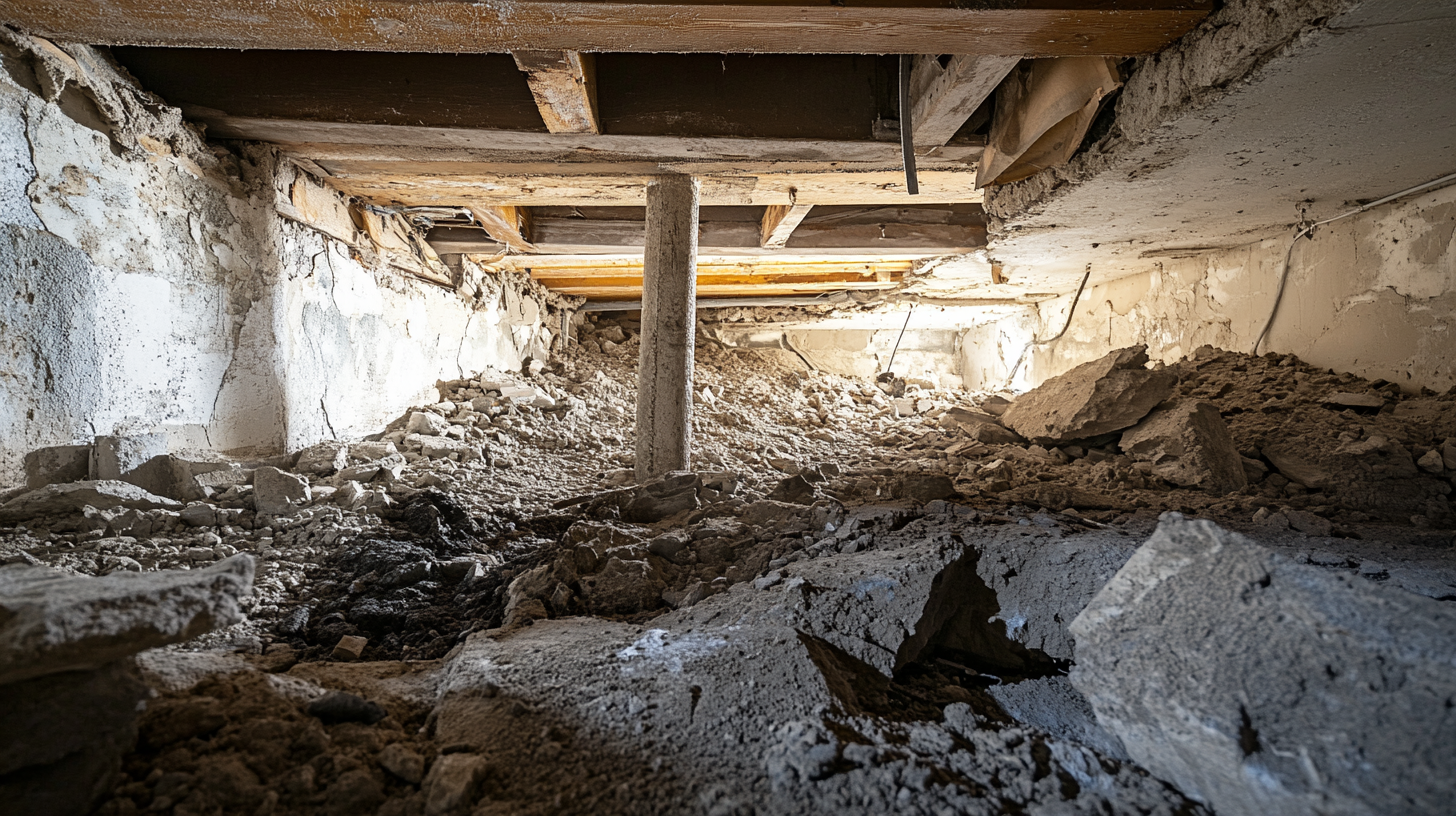

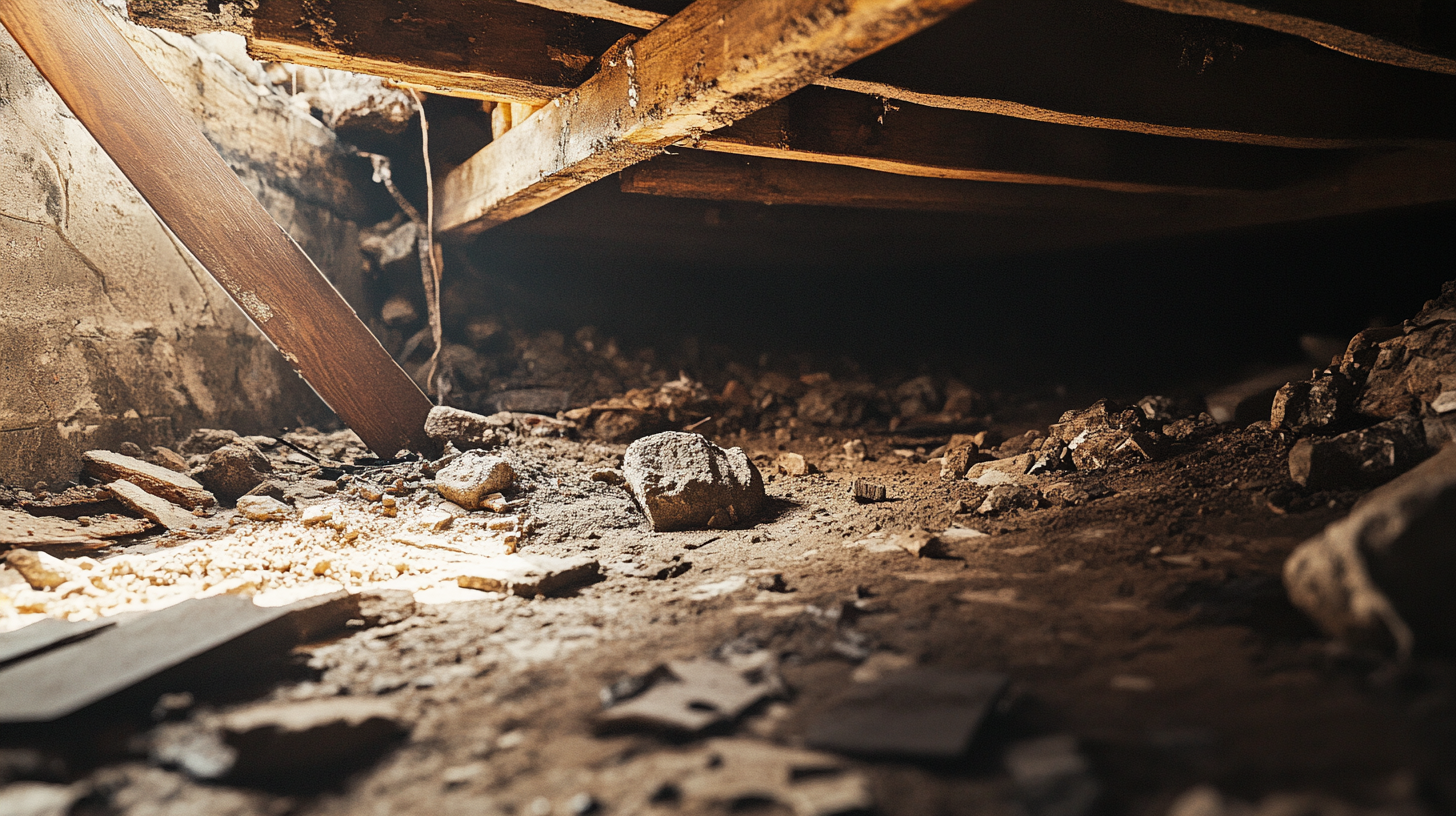
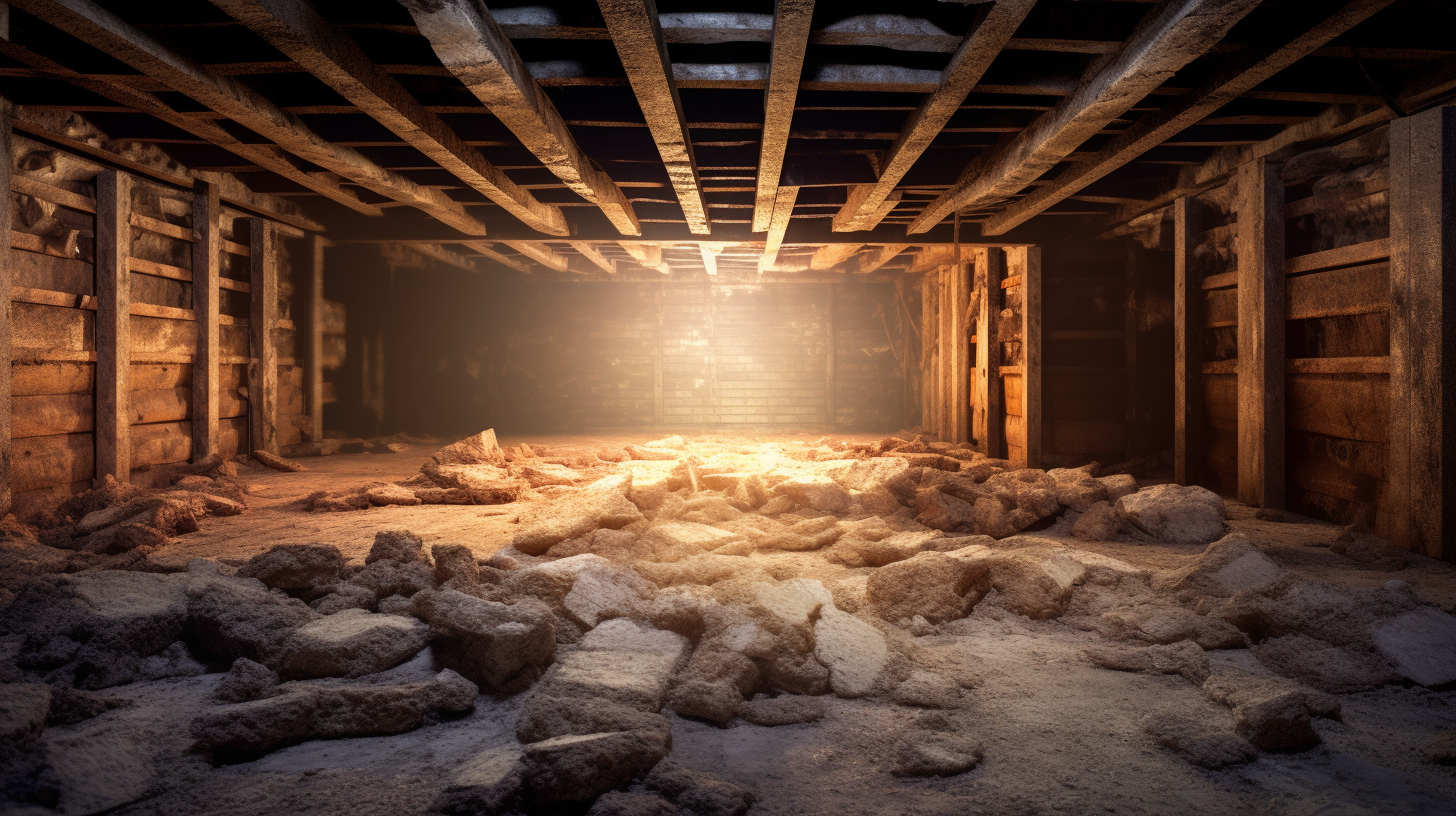
Got a Question? We’re Here to Help.
You can arrange an appointment or make an enquiry by phone or email, orget in touch to us via our contact form.
